Global Journal of Clinical Virology
Coronavirus (COVID-19) pandemic: Outbreak, current scenario and impact on human physiology in Pakistan
Komal Jabeen1,2, Muhammad Basit Husnain Haider3, Zeshan Haider4, Ali Hassan5, Sultan Ali3* and Adnan Khan Niazi4*
2Department of Pharmacy, University of Agriculture, Faisalabad, Pakistan
3Institute of Microbiology, University of Agriculture, Faisalabad, Pakistan
4Centre for Agricultural Biochemistry and Biotechnology (CABB), University of Agriculture, Faisalabad, Pakistan
5Department of Medicine, District Head Quarter Teaching Hospital, Sargodha, Pakistan
Cite this as
Jabeen K, Husnain Haider MB, Haider Z, Hassan A, Ali S, et al. (2021) Coronavirus (COVID-19) pandemic: Outbreak, current scenario and impact on human physiology in Pakistan. Glob J Clin Virol 6(1): 021-029. DOI: 10.17352/gjcv.000011Coronavirus that is also known as COVID-19 disease is produced by SARSCoV-2. This causative agent is highly contagious and can cause potentially fatal pneumonia worldwide with serious public health concerns. In the beginning among infected individuals, most of them were those who were mainly shown to the wet animal market in a big city of China known as Wuhan. So, it was suggested that this was almost certainly the zoonotic source of COVID-19illness. The transitional source of origin and their mode of transmission to humans were not known obviously. Conversely, from human to human rapidly transformation have been confirmed generally. Currently, there is no availability of FDA approved clinically antiviral drugs and/or vaccines to be used against the COVID-19. Afterward, SARS-CoV and MERS-CoV, the occurrence of SARS-CoV-2 has been manifested as the third sketch of an enormously pathogenic coronavirus into human population globally. In this review, we provide a brief overview of the history of COVID-19 in Pakistan up-to 24th weeks after beginning, current situation, epidemiology, and its impact on the human population. Moreover, we focused on physiological variation during the incubation period, genome analysis of SARS-CoV2, supportive treatment approaches, and safety measures in the Pakistani population, which may be supportive for combating the risk of COVID-19 epidemic. We also reviewed the future approaches for the development of therapeutic interventions and vaccines to cope with the COVID-19 epidemic.
Abbreviations
COVID-19: Coronavirus Disease 2019; SARS-CoV2: Acute Respiratory Syndrome Coronaviruses 2; SARS-CoV: Severe Acute Respiratory Syndrome Coronavirus; MERS-CoV: Middle East Respiratory Syndrome Coronavirus; H1N1: Hemagglutinin Type 1 and Neuraminidase Type 1; H5H1: Hemagglutinin Type 5 and Neuraminidase Type 1; MHS: Ministry of Health Services; OPDs: Out-Patient Departments; ARDS: Acute Respiratory Distress Syndrome; 1ORF1: The Open Reading Frame; PCR: Polymerase Chain Reaction; MM: Molecular Mass; ACE-2: Angiotensin-Converting Enzyme-2; GSK: Glaxo Smith Kline; RdRp: RNA-dependent RNA polymerase; KPK: Khyber Pakhtunkhwa; AJK: Azad Jammu and Kashmir; ICT: Islamabad; GB: Gilgit-Baltistan; ARDS: Acute Respiratory Distress Syndrome; IL-6: Interleukin 6; CRP: C-Reactive Protein; NDMA: The National Disaster Management Authority; NIH: National Institute of Health; ssRNA: single-stranded RNA; WHO: World Health Organization
Introduction
Viruses can lead to dangerous lives; they threaten people and cause irreparable damage to them. The world is unlikely to learn to deal with the virus strain when another appears and poses a threat to future humanity. A similar situation arose when a new strain of novel Coronavirus (CoV) that hasn’t been there before was previously identified in people reported in December 2019 [1]. Coronaviruses are the largest among RNA Coronaviridae, Roniviridae and Families Arteriviridae. Coronaviridae is not segmented; 3’-polyadenylated and 5’-encapsulated positive single-stranded RNA viruses cause various respiratory diseases in people [2]. The coronaviruses’ diameter is approximately 65-125 nm and the capsid material of the corona contains a single-stranded RNA. The sub-categories of coronavirus are including alpha [α], beta [β], gamma [γ], and delta [δ] coronavirus. The genomic sequence of SARS-CoV-2 has shown a 99% similarity to the genome of SARS-CoV. Historically, SARS-CoV and MERS-CoV, H1N1, and H5N1 influenza-A are the major known epidemics causing acute respiratory distress and lung injury, leading to pulmonary failure and mortality, and morbidity [3,4]. Coronaviruses were considered to infect only animals until 2002 when the world has seen a SARS CoV disease caused by SARS-CoV in Guangdong, China [5,6]. SARS was ultimately controlled utilising rapid isolation of patients, strict execution of infected person to quarantine along with their associates, inter-connecting of all person to person transmission is controlled, and all these precautionary measures successfully and efficiently eliminated the risk of SARS-CoV [7]. During the last quarter of 2019, coronavirus, which was named as novel coronavirus SARS-CoV-2, occurred in Wuhan, China, that have killed over a large population due to the rapid spread of coronavirus infection [8]. On Mar 30, 2021, COVID-19 is affecting 219 countries and territories all around the world. There are still many un-known mechanisms associated with the COVID-19 outbreak; all these are causing severe illness. Even subsequently, several deaths have been reported in China, the USA, Spain, Italy, Pakistan, and other worldwide countries [9]. In this mini-review, we analysed a brief overview about the history of COVID-19 new confirmed cases and death cases according to per weeks in Pakistan, Current situation of COVID-19 in Pakistan and countries comparison analysis of COVID-19 outbreak. Moreover, focused on physiological variation during different stages of incubation periods and WHO supportive treatment strategies and safety measure during SARS-CoV2 viral replication cycles, which may be supportive for combating the risk of COVID-19 epidemic. We also reviewed the future approaches for development of therapeutic interventions and vaccines to cope with the COVID-19 epidemic.
Emerging and current scenario of COVID-19 in Pakistan
New confirmed cases of COVID-19 per weeks in Pakistan: In Pakistan, after detecting the first 2 cases of COVID-19 on Feb 26, 2020, in Sindh Province, the number of coronavirus infected patients was gradually increased up to the 8th weeks. In 1st week, 4 cases of COVID-19 were reported in Sindh, in 2nd week, by the Ministry of Health Services (MHS), a total of 15 no. of COVID-19 cases in different provinces and cities of Pakistan such as 10 cases in Sindh, 1 case in Baluchistan, 2 cases in both Gilgit-Baltistan (GB) and Islamabad (ICT) were reported. In the 3rd week, the no. of new reported cases was increased up-to 219 in different provinces and cities of Pakistan such as in Punjab, Sindh, Baluchistan, KPK, GB, and ICT are 26,158,14, 17,1 and 3 cases respectively. In the 4th week, a total of 762 new confirmed cases were reported in Punjab, Sindh, Baluchistan, GB, KPK, ICT, and AJK are 270, 241, 100,78, 61,11 and 1 respectively, in 5th week, a total of 1039 no. of cases were reported in the different large area of cities such as in ICT and GB; the announced confirmed cases of COVID-19 are 38 and 103, and in provinces such as Punjab, Sindh, KPK and Baluchistan are 412, 263, 175 and 43 cases of coronavirus were reported respectively, in 6th week the outbreak of novel coronavirus were increased gradually. New reported cases in the 6th week are reached up-to-digit 1,322. In the 7th week total of 1,915 new cases of COVID-19 were reported in provinces and different cities in Pakistan such as Punjab, Sindh, KPK, Baluchistan, AJK, GB, and ICT are 915, 532, 336, 35, 27, 22, and 48 respectively. Similarly, in the 8th week total of 3786 new cases were reported in Punjab, Sindh, KPK, Baluchistan, ICT, GB, and AJK are 1383, 1535, 505, 255, 54, 49, and 5, respectively. In week 9th, 5114 confirmed new cases were reported in Sindh, Punjab, KPK, Baluchistan, ICT, Gilgit-Baltistan, and AJK 2338,1499,793,420,103,47 and 14, respectively. Similarly, at the end of the 31st weeks (Oct 6, 2020) total no of 315,727 confirmed cases of COVID-19 was reported in Pakistan. Similarly, at the end of 36th weeks (end of October 2020) total no of 333,970 confirmed cases of COVID-19 was reported in Pakistan (Figure 1) [10-12].
Death cases of COVID-19 per weeks in Pakistan
The first death case was reported in the 4th week, Pakistan, a total no. 7 death cases were reported in a week, 3 in KPK and four death cases were declared in Punjab, Sindh, Baluchistan, and GB. Similarly, in the 5th, 6th, 7t, 8th, and 9th weeks, the reported deaths were steadily increased up-to 19, 31, 50,102, 118, respectively. Similarly, at the end of the 31st week, a total of 6523 death cases were announced. Similarly, at the end of the 36th week, a total of 6823 death cases were announced (Figure 2).
The effectivity of the COVID-19 situation comparatively significantly distinct in a different province of Pakistan (Table 1). The highest COVID-19 cases were reported in Sindh province, while the lower COVID-19 cases were reported in AJK [13,14].
Beginning and pathway analysis of Coronaviruses’ transmission
Human diseases are transmitted due to interactions of host and environmental factors (droplets, polluted air, etc.). Although few diseases are mainly genetic in origin and nearly all disease consequences occur from an interaction of several environmental, behavioral, and genetic factors, genetic factors are responsible for extents of variations in different diseases/infections. Various underlying protocols are mainly responsible for the transmission of infections. Hence in the current review, we also discuss the approaches of infection origin and their transmission mode. Coronavirus infection-19 is an extremely pathogenic and contagious viral disease. Previously, Chinese people were infected with a respiratory virus causing SARS in 2003 in Guangdong province, China. People infected with SARS-CoV developed pneumonia symptoms and alveolar damage in the lungs that led to ARDS [15]. Secondly, a decade later, several Saudi Arabian peoples were inspected to be diseased with another kind of coronavirus in 2012. The isolated virus belonged to the class of coronaviruses and was entitled to the MERS-CoV. The MERS-CoV infection causes a minor upper respiratory tract injury and leads to severe respiratory infection/disease [16]. In December 2019, the Chinese government informed the World Health Organization about numerous pneumonia and unaware aetiology cases. The transmission of COVID-19 is based on huge numbers of the Chinese population in Wuhan city, China. In the human seafood market, where the animals such as frogs, bats, birds, rabbits, snakes, and marmots were frequently sold, and it is proposed that all these probably belong to the zoonotic origin of coronaviruses. The first report recognised that few bats and snakes could be a potential source of coronaviruses, but claims are still under discussion and require more subnational research to prove it [17-19]. Only α and β sub-categories of coronaviruses can cause disease in humans; the feeding of infected animals, mainly bats, and snakes are the main food sources for Chinese peoples. And this route is the main source of virus transmission from animal to human due to close contact with the infected person; the virus is also transmitted to healthy people (Figure 3). Various surveys have recommended that human-to-human contact, mainly by sneezing and coughing, is a possible route for COVID-19 infection transmission [20].
Approved diagnostic test for COVID-19 in Pakistan
On Mar 12, 2020, The National Institute of Health in Pakistan had recommended Reverse transcriptase, Polymerase chain reaction (RT-PCR) test to better diagnose and detect SARS-CoV2. Different countries across the country have established with RT-PCR system that facilitates the free test for COVID-19 (Table 2). Up to 18-weeks, till Jun 30, 2020, in Pakistan, a total of 3,702,607 tests were conducted for COVID-19 detection, and about 315,727 were reported as positive, respectively (Figure 4). The ratio of confirmed cases of COVID-19 was progressively increasing in different provinces of Pakistan, such as in Punjab, Sindh, KPK, Baluchistan, ICT, Gilgit-Baltistan, and AJK are 36.06%, 39.16%, 12.47%, 4.98%, 6.70%, 0.70%, and 0.50% respectively (Figure 5). The NDMA works with the NIH to increasing the research laboratories for detection of COVID-19 from 15 to 50 in mandate to boost the research quality. The new research laboratories will be established in different cities all over the country. Similarly, Pakistan is starting a training program for paramedics and laboratory staff to resolve the shortfall. NDMA will recruit 100 molecular-biological laboratory technicians [21,22-24].
Impact of COVID-19 on human physiology
The incubation duration of COVID-19 is nearly 51/2 days, and the symptoms of COVID-19 exhibit after the incubation period. The approximate duration from the symptoms’ appearance to death can range from 0 to 14 days [25]. Mainly the duration is dependent on the patient’s immunity and age. The impact of COVID-19 on human physiology was appearing in the forms of influenza, runny nose, coughing, fever, headache, dyspnea, diarrhoea, shortness of breath, and lymphopenia [26-30]. Medical features exposed by a CT-scan of the chest were symbolised as pneumonia, contrariwise others infrequent sorts such as acute cardiac injury and acute respiratory distress syndrome prevalence; that led to death (Figure 6) [31,32].
Structure and genomic analysis of SARS CoV-2
The genomic sequence of the SARS-CoV-2 has been reported to have more than 80% similarity to the previously detected human coronaviruses SARS-CoV [34]. The genome of SARS-CoV-2 comprises of10 open reading frames (ORFs). In SARS-CoV-2the biggest genes which encode the proteolytic processing (pp1ab) protein and 15 naps (non-structural proteins) for viral replication are the ORF1ab genes [35,36]. In SARS-CoV and MERS-CoV, two pp1a and pp1ab polyproteins are translated into seventeen non-structural proteins (nsp1-nsp16), which form the transcriptase complex viral replicas that initiate viral transcription and replication [37,38]. Similarly, SARS-CoV-2 ORFs on the 1/3 of the genome encodes four core structural proteins such as spike (S), membrane (M), nucleocapsid (N), and envelope (E) proteins that may be involved in viral replication [39,40]. Accordingly, some previous investigations and few current studies showed that COVID-19’s genomic research associates the β-coronavirus genus (Figure 7) [41,42].
Supportive treatment and preventive measure against COVID-19 in Pakistan
There is no availability of vaccines and approved antiviral drugs against COVID-19 worldwide. Specialized Department of Health and Medical Education, Government of Punjab, Pakistan, provides supportive management for PCR-positive COVID-19 infected patients, including oxygen saturation and inhalation, vitals monitoring, and supportive management use of I/V fluid. (Table 3). In Pakistan, there are different strategies followed to overcome the effect of COVOD-19. The government focuses on wearing a mask when you go to outside homes, social places, and marketplaces. During this should people maintain the stay 6 feet away/ social distance in the market or crowded places. While during daily life, people should wash their hands with hand sanitisers properly.
The government of Pakistan also initiates the vaccination in different trials. In the first phase, the vaccination was used by premedical’s staff, and in the second phase, the older adults whose age was more than 65 were vaccinated without any cost. In the third phase, the government will use the vaccination for more than 40 years. So, using these strategies government of Pakistan is trying to combat the COVID-19.
Drug availability
At the onset of the pandemic, no new COVID-19 therapeutics or vaccinations were eligible. Several treatments are being tested, including remdesivir and favipiravir, but their antiviral effectiveness is unknown. During the 2014 Ebola virus outbreaks, convalescent plasma was recommended as an alternative therapy. In 2015, a guideline for using convalescent plasma to treat the Middle East respiratory syndrome coronavirus was developed. Other viral infections, such as SARS-CoV, avian influenza, and H1N1 influenza, were treated similarly, indicating that transfusion of convalescent plasma was successful. In previous studies, most patients obtained convalescent plasma from a single transmission [44].
Furthermore, hydroxychloroquine is another treatment for Covid-19, according to the researcher. In vitro, it has antiviral activity against SARS-CoV-2. In ICU Covid-19 patients, the Surviving Sepsis Campaign recommendations stated that there was inadequate data to prescribe antiviral drugs and hydroxychloroquine. Furthermore, the usage of two separate dosing regimens for these medications has little impact on chronically ill patients’ results [45].
Patients who are seriously ill with COVID-19 are being handled with convalescent plasma, according to recent research. Within days after receiving convalescent plasma, viral load decreased, and these patients’ health outcomes increased, as shown by lower body temperatures and improved chest imaging. Nine days after consuming plasma, four patients on mechanical ventilation no longer needed it (Yeh, et al. 2005) (Figure 8) [44-46]. Outcomes of continuing clinical trials are impatiently awaited. Self-protection from COVID-19 was confirmed by using gloves, glasses, hand sanitiser, and N-95 masks. Also, plenty of water and organ juice intake played a significant role in boosting human immunity.
Future prospects
Furthermost importantly, working on human COVID-19 targeting antiviral drugs and vaccines should be designed to be used against viral epidemics. Many companies such as Inovio California, Cancino Bio China, Pfizer & Biotech, Sanofi, and GSK effectively develop the vaccine against SARS-CoV-2. Researchers are working hard to advance/develop the required successful therapeutic approaches to manage the novel COVID-19. COVID-19 vaccinations have been provided to millions of citizens in the United States, and they have undergone the most rigorous safety testing in the country’s history. To ensure that COVID-19 vaccinations are secure, this surveillance requires both existing and new protection monitoring systems. The European Medicines Agency (EMA) has licensed these vaccinations, which has previously only authorised vaccines from Pfizer/BioNTech, Moderna, and AstraZeneca. According to forecasts, the Covid-19 vaccine could decrease morbidity and mortality rates while also enhancing health outcomes in efficacy and safety management. Lockdown, mask wear, social distance, exact evaluation, proper treatment, and vaccine are only a couple of the precautionary steps that the government can take to minimise the danger of Covid-19. The transmission of COVID-19 influences the population to save several human lives if we adopt aggressive preventive measures. A government recommended guideline should be practised, diminishing the transmission from one person to another of COVID-19 and regulates the viral epidemic. The exact diagnosis will help monitor the rapid spread of the infection in the early stages of the epidemic. Pakistan and all other countries will adopt primary anticipatory, control, and preventive measures explicitly focusing on travel screening to regulate the further transmission of the outbreak of SARS-CoV2.
Conclusion
China faced COVID-19 in December 2019 and has been confirmed to clear the spread of coronavirus approximately after months; few other countries, such as South Korea, have been capable enough to manage the outbreak of COVID-19, but numerous developing countries, mainly Pakistan, has not been well-off. The pandemic of COVID-19 is looking more catastrophic and disaster effect than the 2nd World War. Pakistan would be affected by the COVID-19 outbreak and mainly impact the socio-economic situation in different fields/sectors. In this review, we concluded the coronavirus epidemic up-to 18 weeks (30-June, 2020) in Pakistan, and their outbreak was gradually increased in different provinces of Pakistan. A large no. of COVID-19 cases was seen in Sindh.
Similarly, overall, about 2.06% of the death ratio due to COVID-19 in Pakistan was reported. COVID-19 mortality rate accordingly to area division progressively increased in-order such as in Punjab, Sindh, Baluchistan, Gilgit-Baltistan, and ICT are 2.28%, 1.64%, 1.90%, 2.62%, and 1.00%, respectively. The mortality rate was highly testified in KPK about 3.58%, and test conductance rate was reported fewer in KPK. This situation should be noticeable. Appropriate implementation of preventative measures and control of the COVID-19 outbreak now-a-day become a challenging phase for the Pakistan population.
The authors acknowledge the Faculty of Veterinary Science, University of Agriculture, Faisalabad, Pakistan, Institute of Microbiology, University of Agriculture, Faisalabad, Pakistan, and Centre of Agricultural Biochemistry and Biotechnology (CABB), University of Agriculture, Faisalabad, Pakistan for their valuable suggestion to enhancing this review.
Author’s contributions
All authors have contributed significantly to this for the conception, design, analysis and Data interpretation, review and approval of the final version of the manuscript and agree to be responsible for its content.
- Gorbalenya AE, Baker SC, Baric R, Groot RJ, Drosten C, et al. (2020) Severe acute respiratory syndrome-related coronavirus: The species and its viruses–a statement of the Coronavirus Study Group. BioRxiv. Link: https://bit.ly/3m8WZwQ
- Yang L, Wu Z, Ren X, Yang F, He G, et al. (2013) Novel SARS-like betacoronaviruses in bats, China, 2011. Emerg Infect Dis 19: 989-991. Link: https://bit.ly/3uahfkF
- Wong S, Lau S, Woo P, Yuen KY (2007) Bats as a continuing source of emerging infections in humans. Rev Med Virol 17: 67-91. Link: https://bit.ly/3dpNg1g
- Hu B, Ge X, Wang LF, Shi Z (2015) Bat origin of human coronaviruses. Virology Journal 12: 221. Link: https://bit.ly/3m8cwx8
- Zhong NS, Zheng BJ, Li YM, Poon LL, Xie ZH, et al. (203) Epidemiology and cause of severe acute respiratory syndrome (SARS) in Guangdong, People's Republic of China. Lancet 362: 1353-1358. Link: https://bit.ly/31vNYom
- Hu B, Zeng LP, Yang XL, Ge XY, Zhang W, et al. (2017) Discovery of a rich gene pool of bat SARS-related coronaviruses provides new insights into the origin of SARS coronavirus. PLoS Pathogens 13:10066-10098. Link: https://bit.ly/3cCN9R1
- Lau SK, Li KS, Huang Y, Shek CT, Tse H, et al. (2010) Ecoepidemiology and complete genome comparison of different strains of severe acute respiratory syndrome-related Rhinolophus bat coronavirus in China reveal bats as a reservoir for acute, self-limiting infection that allows recombination events. J Virol 84: 2808-2819. Link: https://bit.ly/2Plr3JS
- Chan JF, Kok KH, Zhu Z, Chu H, To KK, et al. (2020) Genomic characterisation of the 2019 novel human-pathogenic coronavirus isolated from a patient with atypical pneumonia after visiting Wuhan. Emerg Microbes Infect 9: 221-236. Link: https://bit.ly/2QII6FZ
- Shereen MA, Khan S, Kazmi A, Bashir N, Siddique R (2020) COVID-19 infection: Origin, transmission, and characteristics of human coronaviruses. J Adv Res 24: 91-98. Link: https://bit.ly/3rDnoUS
- Qureshi UU, Saleem S, Khan A, Afzal MS, Ali MS, et al. (2020) Outbreak of novel Corona virus (2019-nCoV); implications for travelers to Pakistan. Travel Med Infect Dis 34: 1015-1071. Link: https://bit.ly/3uasTw4
- Ling Y, Xu SB, Lin YX, Tian D, Zhu ZQ, et al. (2020) Persistence and clearance of viral RNA in 2019 novel coronavirus disease rehabilitation patients. Chin Med J 133: 1039-1043. Link: https://bit.ly/31zeNrI
- Ali I, Shah SA, Siddiqui N (2020) Pakistan confirms first two cases of coronavirus, govt says "no need to panic". DAWN. COM, 26.
- Saqlain M, Munir MM, Ahmed A, Tahir AH, Kamran S (2020) Is Pakistan prepared to tackle the coronavirus epidemic?. Drugs Ther Perspect 36: 213-214. Link: https://bit.ly/3cCY2SF
- Rodríguez-Morales AJ, MacGregor K, Kanagarajah S, Patel D, Schlagenhauf P (2020) Going global–Travel and the 2019 novel coronavirus. Travel Med Infect Dis 33: 101578. Link: https://bit.ly/3m8fG47
- Qiu C, Deng Z, Xiao Q, Shu Y, Deng Y, et al. (2020) Transmission and clinical characteristics of coronavirus disease 2019 in 104 outside‐Wuhan patients, China. J Med Virol 1-9. Link: https://bit.ly/39wtYWX
- Lu R, Zhao X, Li J, Niu P, Yang B, et al. (2020) Genomic characterisation and epidemiology of 2019 novel coronavirus: implications for virus origins and receptor binding. Lancet 395: 565-574. Link: https://bit.ly/2Pq3y2d
- Abbas T, Ali G, Adil SA, Bashir MK, Kamran MA (2017) Economic analysis of biogas adoption technology by rural farmers: The case of Faisalabad district in Pakistan. Renewable Energy 107: 431-439. Link: https://bit.ly/3u40yqU
- Kim JY, Choe PG, Oh Y, Oh KJ, Kim J, et al. (2020) The first case of 2019 novel coronavirus pneumonia imported into Korea from Wuhan, China: implication for infection prevention and control measures. J Korean Med Sci 35: e61. Link: https://bit.ly/2QUH2z2
- Randhawa GS, Soltysiak MP, El Roz H, de Souza CP, Hill KA, et al. (2020) Machine learning-based analysis of genomes suggests associations between Wuhan 2019-nCoV and bat Betacoronaviruses. bioRxiv. Link: https://bit.ly/3dBo48r
- Khan EA (2020) Special Situations COVID-19 in children: Epidemiology, presentation, diagnosis and management. J Pak Med Assoc 70: S108-S112. Link: https://bit.ly/3cAaMcK
- Javed B, Sarwer A, Soto EB, Mashwani ZU (2020) Is Pakistan on track to have COVID-19 transmission and mortality rates similar to those of Italy, Iran or the USA?. Drugs Ther Perspect 1-5. Link: https://bit.ly/3cCxMrw
- Ren LL, Wang YM, Wu ZQ, Xiang ZC, Guo L, et al. (2020) Identification of a novel coronavirus causing severe pneumonia in human: a descriptive study. Chin Med J 133: 1015-1024. Link: https://bit.ly/31BbRLk
- Huang C, Wang Y, Li X, Ren L, Zhao J, et al. (2020) Clinical features of patients infected with 2019 novel coronavirus in Wuhan, China. Lancet 395: 497-506. Link: https://bit.ly/3rAPkZl
- Guan WJ, Ni ZY, Hu Y, Liang WH, Ou CQ, et al. (2020) Clinical characteristics of 2019 novel coronavirus infection in China. Link: https://bit.ly/3m62MDs
- Xu YH, Dong JH, An WM, Lv XY, Yin XP, et al. (2020) Clinical and computed tomographic imaging features of novel coronavirus pneumonia caused by SARS-CoV-2. Journal of Infection 84: 394-400. Link: https://bit.ly/3rAPn7t
- Ralph R, Lew J, Zeng T, Francis M, Xue B, et al. (2020) 2019-nCoV (Wuhan virus), a novel Coronavirus: human-to-human transmission, travel-related cases, and vaccine readiness. J Infect Dev Ctries 14: 3-17. Link: https://bit.ly/3mbtf2v
- Chan KW, Wong VT, Tang SCW (2020) COVID-19: An Update on the Epidemiological, Clinical, Preventive and Therapeutic Evidence and Guidelines of Integrative Chinese–Western Medicine for the Management of 2019 Novel Coronavirus Disease. Am J Chin Med 48: 737-762. Link: https://bit.ly/3dkKEBT
- Carlos WG, Dela CC, Cao B, Pasnick S, Jamil S (2020) Novel Wuhan (2019-nCoV) Coronavirus. Am J Respir Crit Care Med 201: P7-P8. Link: https://bit.ly/3sywAuZ
- Mukhtar MS (2020) Mental health and psychosocial aspects of coronavirus outbreak in Pakistan: psychological intervention for public mental health crisis. Asian J Psychiatr 51: 102069. Link: https://bit.ly/3u99awx
- Zhu N, Zhang D, Wang W, Li X, Yang B, et al. (2020) A novel coronavirus from patients with pneumonia in China, 2019. N Engl J Med 382: 727-733. Link: https://bit.ly/3sHNcka
- Paraskevis D, Kostaki EG, Magiorkinis G, Panayiotakopoulos G, Sourvinos G, et al. (2020) Full-genome evolutionary analysis of the novel corona virus (2019-nCoV) rejects the hypothesis of emergence as a result of a recent recombination event. Infect Genet Evol 79: 104212. Link: https://bit.ly/3wdApb3
- Chang TJ, Yang DM, Wang ML, Liang KH, Tsai PH, et al. (2020) Genomic analysis and comparative multiple sequences of SARS-CoV2. J Chin Med Assoc 83: 537-543. Link: https://bit.ly/3fucTRl
- Backer JA, Klinkenberg D, Wallinga J (2020) Incubatio n period of 2019 novel coronavirus (2019-nCoV) infections among travellers from Wuhan, China. Euro Surveill 25: 2000062. Link: https://bit.ly/3wdW9DR
- Gorbalenya AE, Baker SC, Baric R, Groot RJ, Drosten C, et al. (2020) Severe acute respiratory syndrome-related coronavirus: The species and its viruses–a statement of the Coronavirus Study Group. BioRxiv. Link: https://bit.ly/39r7hTV
- Głąbska D, Skolmowska D, Guzek D (2020) Population-Based Study of the Influence of the COVID-19 Pandemic on Hand Hygiene Behaviors—Polish Adolescents' COVID-19 Experience (PLACE-19) Study. Sustainabilit 12: 4930. Link: https://bit.ly/3cC54Hq
- Gautret P, Lagier JC, Parola P, Meddeb L, Mailhe M, et al. (2020) Hydroxychloroquine and azithromycin as a treatment of COVID-19: results of an open-label non-randomised clinical trial. Int J Antimicrob Agents 2020:105949. Link: https://bit.ly/31C4xPk
- (2020) The species Severe acute respiratory syndrome-related coronavirus: classifying 2019-nCoV and naming it SARS-CoV-2. Nature Microbiology 5: 536-544. Link: https://go.nature.com/3fooNfA
- Wan Y, Shang J, Graham R, Baric RS, Li F (2020) Receptor recognition by the novel coronavirus from Wuhan: an analysis based on decade-long structural studies of SARS coronavirus. Journal of virology 94. Link: https://bit.ly/3dkKnz1
- Silva Júnior JV, Lopes TR, de Oliveira PS, Weiblen R, Flores EF (2020) Issues on Coronavirus Disease 2019 (COVID-19) Pathogenesis. Viral Immunology. Link: https://bit.ly/3fudna7
- Sanders JM, Monogue ML, Jodlowski TZ, Cutrell JB (2020) Pharmacologic treatments for coronavirus disease 2019 (COVID-19): a review. JAMA 323: 1824-1836. Link: https://bit.ly/3fuq7gQ
- Yao X, Ye F, Zhang M, Cui C, Huang B, et al. (2020) In vitro antiviral activity and projection of optimised dosing design of hydroxychloroquine for the treatment of severe acute respiratory syndrome coronavirus 2 (SARS-CoV-2). Clin Infect Dis 28: 732-739. Link: https://bit.ly/3u9VWjf
- Pastick KA, Okafor EC, Wang F, Lofgren SM, Skipper CP, et al. (2020) Hydroxychloroquine and chloroquine for treatment of SARS-CoV-2 (COVID-19). InOpen Forum Infectious Diseases. US: Oxford University Press 7: 130. Link: https://bit.ly/31AHQLC
- Waris A, Khan AU, Ali M, Ali A, Baset A (2020) COVID-19 outbreak: current scenario of Pakistan. New Microbes and New Infections 35: 100681. Link: https://bit.ly/3m6YDPG
- Kumar S, Nyodu R, Maurya VK, Saxena SK (2020) Morphology, Genome Organization, Replication, and Pathogenesis of Severe Acute Respiratory Syndrome Coronavirus 2 (SARS-CoV-2). Coronavirus Disease 2019 (COVID-19) 2020: 23-31. Link: https://bit.ly/39vj3Nk
- Mohapatra RK, Pintilie L, Kandi V, Sarangi AK, Das D, et al. (2020) The recent challenges of highly contagious COVID‐19, causing respiratory infections: Symptoms, diagnosis, transmission, possible vaccines, animal models, and immunotherapy. Chem Biol Drug Des96: 1187-1208. Link: https://bit.ly/3wh38Mr
- Mushtaq A, Ikram A, Chaudhry A, Sandhu M, Khalid F, et al. (2020) Evaluation of the COVID-19 Laboratory-Based Surveillance System in Islamabad-Pakistan 2020. Global Biosecurity 1. Link: https://bit.ly/3u97KCq
- Robertson D (2020) nCoV's relationship to bat coronaviruses & recombination signals (no snakes)-no evidence the 2019-nCoV lineage is recombinant. Virological org URL 331. Link: https://bit.ly/39vCmpB
Article Alerts
Subscribe to our articles alerts and stay tuned.
 This work is licensed under a Creative Commons Attribution 4.0 International License.
This work is licensed under a Creative Commons Attribution 4.0 International License.
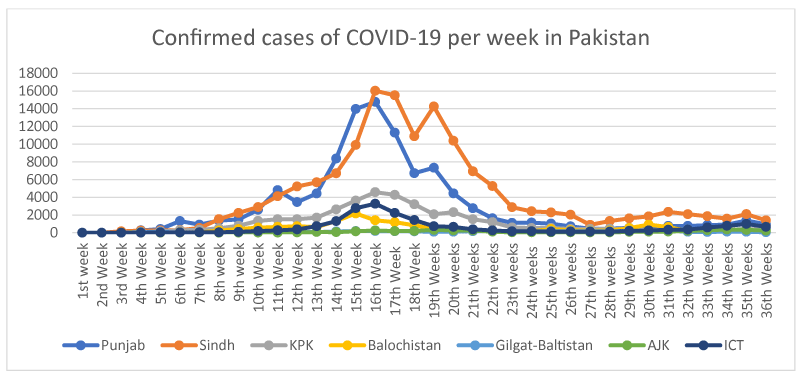
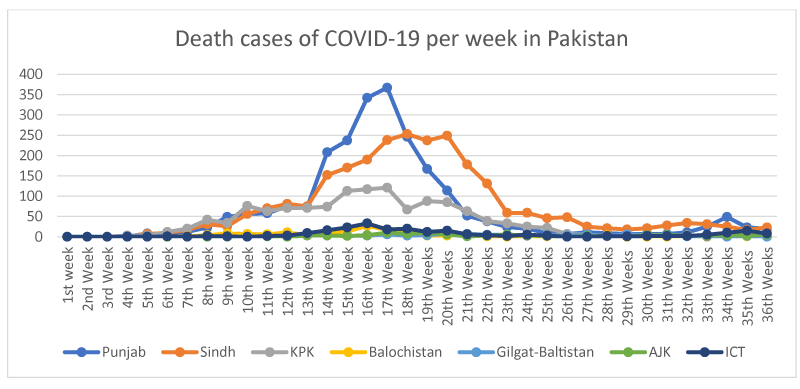
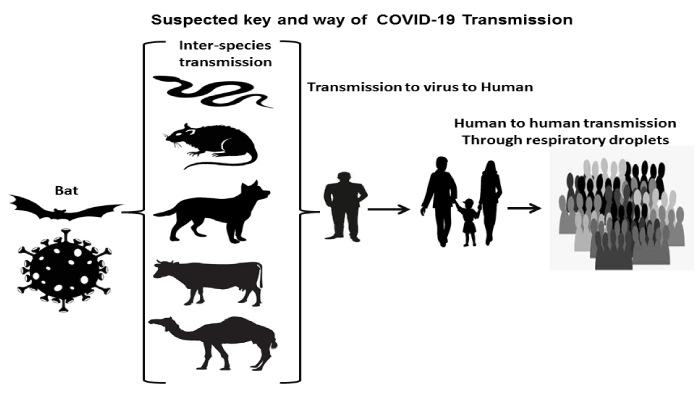
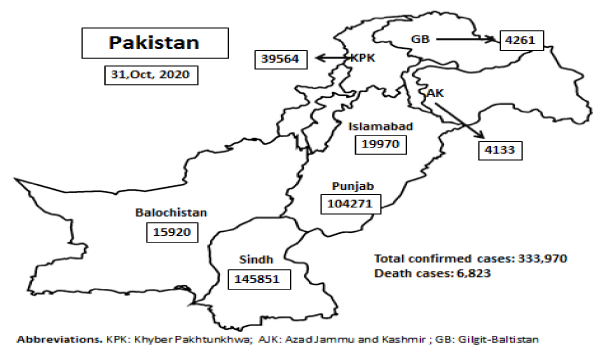
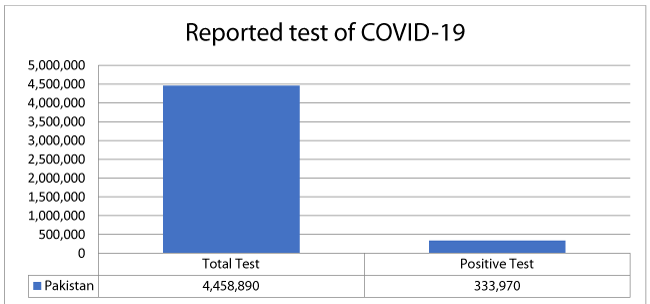
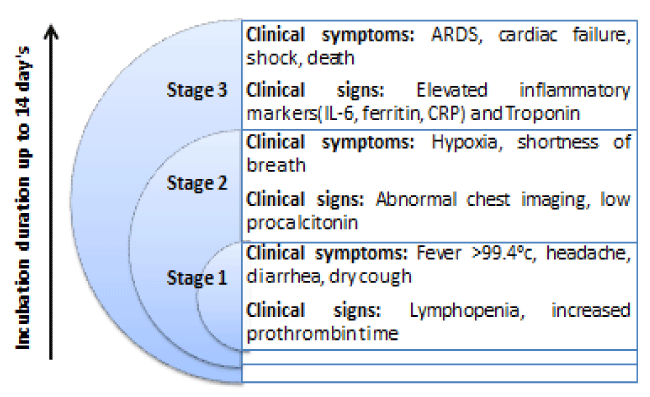
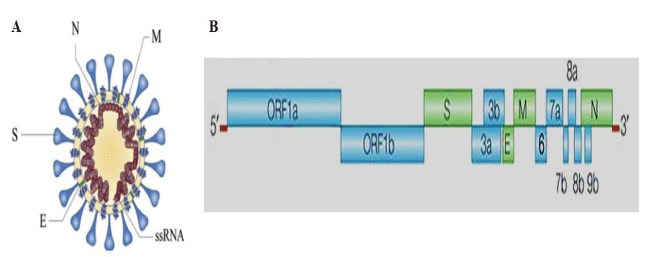
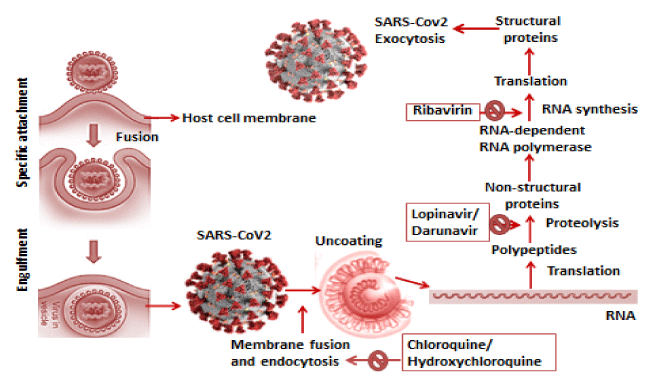
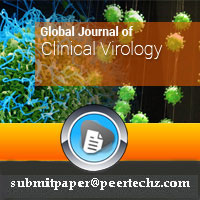
 Save to Mendeley
Save to Mendeley
